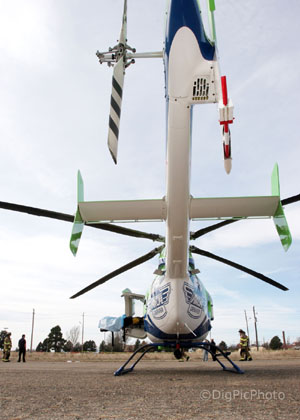AIRLIFE DENVER Puts Safety First...Always
Ask any one of the flight nurses, flight paramedics, pilots, communication specialists or EMTs on the AirLife Denver staff what our #1 priority is, and you will hear the same response each and every time: SAFETY. After 31 years of service and over 62,000 lives affected by our transports, Safety remains the priority each and every time our crews prepare to respond to a call.
Watch the AirLife Denver team tell you about our Commitment to Safety in person! (Videography and Editing by RW Pilot Greg Poirier; Music by NNP Karen Sawyer.)
With the recent media coverage of sweeping changes recommended by the NTSB for the medical air transport industry, AirLife Denver is pleased to attest to already having these mandates in place for our safety protocols and procedures. We know that your highest priority is the safety of your patient, and your concerns come into play as you decide whom to call for a patient transport.
We encourage you, if you have not done so already, to read the Safety Letter AirLife Denver sent to our community partners earlier this year in a preemptive response to the concerns we realized would arise in the wake of incidents involving air medical transports. Once you do, you too can join us in leading the charge to promote and demand safety practices in each and every aspect of what we all do to save lives.
It starts with me - and you.
AIRLIFE Hospital Scene Safety
Any time that a helicopter lands, whether it is on scene or at a hospital, safety is our most important goal. There are a few things that everyone can do to help:
- Keep spectators at least 200 feet away
- Assure personal equipment is secured (i.e. no hats, no mattress on stretcher to be blown away)
- Do not approach the helicopter until you are signaled by one of the crew members
- Always approach from the front of the helicopter, never from the tail
- Never bend over when approaching the helicopter. The rotors are 10 feet above the ground, and you are more likely to trip and fall if you are looking down
- Do not hold anything above your head
- Be available to assist the crew in loading or unloading equipment and the patient if needed
Guidelines for Scene Operations
Preparing a Landing Zone (LZ) is the first step in safely landing a helicopter at any area
- Determine if the area is large enough (100ft by 100ft minimum)
- Are there obstructions in the immediate area? If so, identify and mark them
- Identify location by GPS-coordinates if available or a major nearby intersection
- Mark touchdown area with cones, ground strobe lights, etc. and (make sure they are secured so they won't blow away)
- If it is a night scene, Spotlight any obstructions

After the LZ is set up, there is some very important information that the flight crew needs. This information is crucial to the safety of the team. Please provide as much of the following information that is available:
- Wind direction and speed, i.e. from the south at 10 mph
- Obstructions, such as trees, poles, wires, etc.
- Landing zone surface, i.e. gravel, dirt, sloped, etc.
- If possible, some basic patient information
Once the helicopter has landed, your agency may be asked to provide one or two tail rotor guards to keep bystanders away from the moving tail rotor. They should be placed on both sides of the helicopter at least 40ft away.
When loading the aircraft, the crew may ask for your assistance. A minimum of three people are needed to load a patient into the aircraft, with one person at the head and two at the feet. More assistance will be required for larger patients.

Always approach and depart from the front of the aircraft
Never from the tail
For safety related questions and concerns or to arrange for a Safety Inservice for your agency, please contact one of our Safety Advisors:
Or you may contact the AIRLIFE Administration Office at (303) 338-7338.
All AirLife Denver Helicopters and Fixed Wing are operated by Air Methods, Inc.